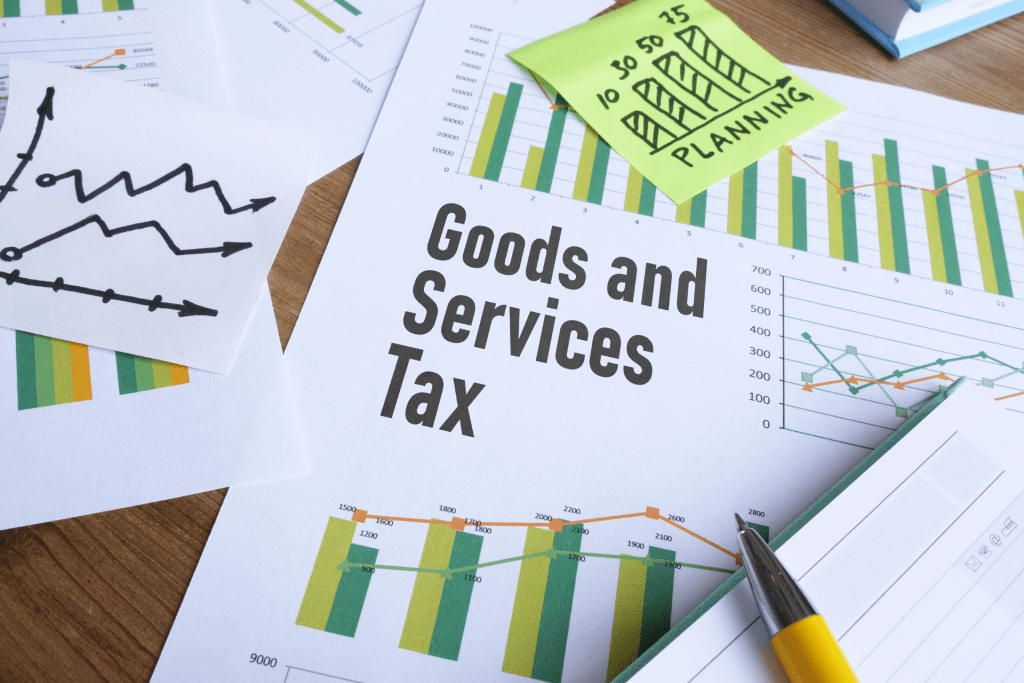Introduction
The Goods and Services Tax (GST) is a simplified tax system applied to nearly all goods and services consumed within a country. It was introduced as a solution to the complex, multi-layered indirect tax structure that previously existed, which included various regional and federal taxes like VAT (Value Added Tax), service tax, excise duty, and more. Before GST, businesses faced a challenging tax environment, with each state and the central government imposing separate taxes on goods and services. This fragmented system led to tax overlaps, compliance challenges, and often, a cascade effect where tax was applied to a product at multiple stages without proper offsets.
GST streamlined this by consolidating all these taxes into one unified tax applicable across the country. This new structure simplifies the process, ensures transparency, and allows for smoother interstate business, reducing the final price burden on consumers. It is designed to be a “destination-based” tax, meaning it is charged at the point of consumption rather than the point of origin, making it fairer and more predictable.
This guide is intended for anyone who wants a clear understanding of GST basics. Small business owners, freelancers, and consumers will all find value in this guide. For business owners and freelancers, understanding GST is essential for compliance, pricing, and managing cash flow. For consumers, knowing the basics of GST helps you understand how it affects pricing and the overall economy.
What is GST?
GST, or Goods and Services Tax, is a comprehensive, multi-stage tax on the supply of goods and services. It is levied at every stage of production but is meant to be passed on to the final consumer. In simple terms, GST is a tax on all transactions involving goods and services, and it is collected by businesses at each step along the supply chain, from production to sale.
One of the main objectives of GST is to reduce tax complexity. In the past, indirect taxes varied by state and by type of product or service, making it challenging for businesses to stay compliant and for consumers to understand what they were paying for. GST consolidates previous taxes like VAT, service tax, and excise duty into a single, straightforward tax, creating a more efficient, easier-to-navigate system.
Key Terms You Need to Know
To understand GST fully, it’s essential to grasp a few key terms that will help you navigate the system.
Input Tax Credit (ITC)
Input Tax Credit is the credit businesses receive for the tax paid on purchases or expenses made for business purposes. Essentially, if a business pays GST on its inputs (like raw materials), it can claim that amount back, reducing its overall tax liability. This system prevents the “tax-on-tax” effect, ensuring that tax is only charged on the value added at each stage.
Output Tax
Output tax is the GST a business collects on sales of goods or services. For instance, when a business sells a product to a consumer, it charges GST and collects it as output tax. This amount is then remitted to the government after adjusting for any eligible input tax credits.
SGST, CGST, and IGST
These components represent the different types of GST applied depending on the location of the transaction:
SGST (State Goods and Services Tax): Collected by the state government when a transaction occurs within a single state.
CGST (Central Goods and Services Tax): Collected by the central government alongside SGST in intra-state transactions.
IGST (Integrated Goods and Services Tax): Collected by the central government for inter-state transactions, which is then distributed between the central and relevant state governments.
GSTIN (GST Identification Number): This unique identification number is assigned to every registered business under GST. It is mandatory for businesses that exceed a certain turnover threshold or fall under specific categories. GSTIN helps the government track compliance and ensures that businesses operate within the legal framework.
How GST Works in Practice
To illustrate how GST functions practically, let’s consider a basic example of a product moving through the supply chain, from manufacturer to consumer.
Suppose a manufacturer produces a product and sells it to a wholesaler for $100, charging an 18% GST. The GST collected is $18, making the total invoice to the wholesaler $118. Now, the wholesaler sells this product to a retailer at $150 plus 18% GST, or $27, making the total price to the retailer $177. However, since the wholesaler already paid $18 in GST to the manufacturer, they can deduct this amount (the Input Tax Credit) from the $27 GST collected, and only remit the $9 difference to the government. This same process repeats when the retailer sells the product to the end consumer, applying GST on the sale and claiming credit for the GST they’ve already paid.
In practice, each entity in the supply chain only pays tax on the value they add, making the GST system efficient and transparent. This Input Tax Credit mechanism is key to avoiding the cascade effect of multiple taxes, keeping prices fair and ensuring consumers are not overtaxed. For additional tax savings tips, check out our blog on the 10 Most Popular Canadian Tax Deductions and Credits.
Using a flowchart or step-by-step breakdown, we can see how GST ensures that only the final consumer ultimately bears the tax, while each intermediate business deducts the GST they’ve already paid. This simplification is a major benefit of GST, making it easier for businesses to comply and for consumers to trust the fairness of the tax system.
Who Needs to Register for GST?
In Alberta, businesses are required to register for Goods and Services Tax (GST) if their annual taxable revenues exceed $30,000 over four consecutive calendar quarters. This threshold applies to most businesses, including small suppliers.
Entities Required to Register:
- Small Suppliers: Businesses with annual taxable revenues under $30,000 are considered small suppliers and are generally not required to register for GST. However, if they exceed this threshold, registration becomes mandatory.
- Voluntary Registration: Small suppliers can choose to register voluntarily, allowing them to charge GST and claim Input Tax Credits (ITCs) on business expenses.
Benefits of Voluntary Registration:
- Input Tax Credits: Registered businesses can claim credits for GST paid on purchases, reducing tax liability.
- Enhanced Credibility: GST registration adds credibility for clients and suppliers, especially for growing businesses.
How to Register for GST
Step-by-Step Registration Process
- Obtain a Business Number (BN): Start by registering through the CRA’s Business Registration Online portal.
- Register for a GST/HST Account: Once you have a BN, you can add a GST/HST account for GST collection and filing.
- Provide Required Information: This includes business structure, contact details, and estimated sales.
Estimated Time and Fees
- Time: Registration is typically instant online.
- Fees: There are no government fees for registering for a GST/HST account.
Importance of GSTIN
The GST/HST account number, part of your BN, is essential for collecting GST, filing returns, and claiming ITCs.
GST Rates and Categories
Alberta applies a standard 5% GST rate on most goods and services.
Overview of GST Rates
- 5% Standard Rate: Most goods and services, including clothing, electronics, and professional services.
- 0% Zero-Rated: Certain essential items like basic groceries and prescription drugs.
- Exempt Items: Services like residential rent and most health and dental services are exempt.
For more detailed information on specific taxable, zero-rated, and exempt items, visit the Canada Revenue Agency’s GST Rates page.
How to File GST Returns
Filing Process
- Determine Filing Frequency: The CRA website provides guidance on monthly, quarterly, or annual filing based on taxable supplies.
- Organize Records: Keep records of all sales, purchases, and GST collected and paid.
- Complete the GST/HST Return: Use the CRA’s online portal to file, reporting GST collected and Input Tax Credits claimed.
Filing Schedules
- Monthly: For businesses with annual taxable supplies over $6 million.
- Quarterly: For businesses with annual taxable supplies between $1.5 million and $6 million.
- Annually: For businesses with annual taxable supplies of $1.5 million or less.
Tips for Easier Filing
- Use Accounting Software: Many businesses find it helpful to use accounting software.
- Consider Professional Advice: For complex cases, tax professionals can ensure compliance.
Benefits of GST for Businesses and Consumers
For Businesses:
- Input Tax Credits: Businesses can reduce tax liability by claiming credits for GST paid on expenses.
- Simplified Tax Structure: GST combines multiple taxes, reducing paperwork and compliance burdens.
For Consumers:
- Transparency in Pricing: GST is clearly stated on receipts, making pricing transparent.
- Fair Taxation: With a single tax rate, consumers avoid hidden costs and see fairer pricing.
By understanding Alberta’s GST structure, businesses can streamline compliance and enjoy financial advantages, while consumers benefit from transparent and fair pricing.
GST Compliance Checklist for Small Businesses
Ensuring GST compliance can seem complex, but following a clear checklist can simplify the process.
Begin by confirming that your business is registered if your revenue exceeds the threshold or if you operate in a category requiring registration. Voluntary registration is also an option for smaller businesses that want to access benefits like Input Tax Credit (ITC) eligibility.
Accurate record-keeping is essential. Organized records of all sales, purchases, and expenses are crucial for calculating taxes and streamlining the filing process. Digital invoices ensure that required information—such as GSTIN, tax rates, and itemized GST amounts—is readily available. Implementing effective bookkeeping strategies for small businesses can also help maintain compliance.
Another key part of compliance is filing returns on time. Depending on your business’s revenue, you may need to file monthly, quarterly, or annually. Setting reminders helps ensure deadlines are met, as late filings can result in penalties.
Finally, claim ITC only on eligible purchases. Double-check records of all business expenses to confirm they meet ITC requirements, preventing issues during audits.
Common Mistakes and How to Avoid Them
Mistakes with GST compliance are common, especially for newer businesses. Here are three frequent pitfalls and tips to avoid them:
- Missing Return Deadlines
Filing late can lead to penalties. Automated reminders or accounting software with notification features help keep your filing on schedule. - Errors in Input Tax Credit Calculations
Miscalculating ITC is a frequent issue. Double-check expenses to ensure they are eligible, and maintain thorough records to avoid compliance problems. Maximizing tax benefits is essential for cost efficiency. - Incorrect GST Rates
Different goods and services are subject to various GST rates, and using the wrong rate can impact compliance. Confirm rates for each item or service, and keep an updated reference list.
Quick Tips to Stay Compliant:
- Reliable accounting software automates rate calculations and tracks deadlines.
- Professional assistance can provide guidance with complex transactions and compliance.
Tools and Resources for GST Management
The right tools make GST compliance significantly easier. Here are some top recommendations:
- Accounting Software: Platforms like QuickBooks, Xero, and FreshBooks streamline GST calculations, invoicing, and record-keeping, often with reminders for filing deadlines.
- Canada Revenue Agency’s Resources: The CRA’s GST/HST guide offers detailed information on rates, credits, and filing requirements.
- Tax Consultants: For complex cases, a GST consultant can ensure compliance, assist with filings, and provide guidance on eligibility for tax credits. Avoiding common financial errors can be crucial for smooth operations.
Conclusion
In summary, GST offers a simplified tax structure that benefits businesses and consumers alike, but compliance requires careful record-keeping and timely filing. With the right approach and resources, maintaining compliance is achievable. Small businesses, in particular, benefit from accounting tools and professional guidance to ensure accuracy and maximize tax credits.
Need help navigating GST? Reach out to our team for a consultation to keep your business tax-compliant and optimize available benefits.








